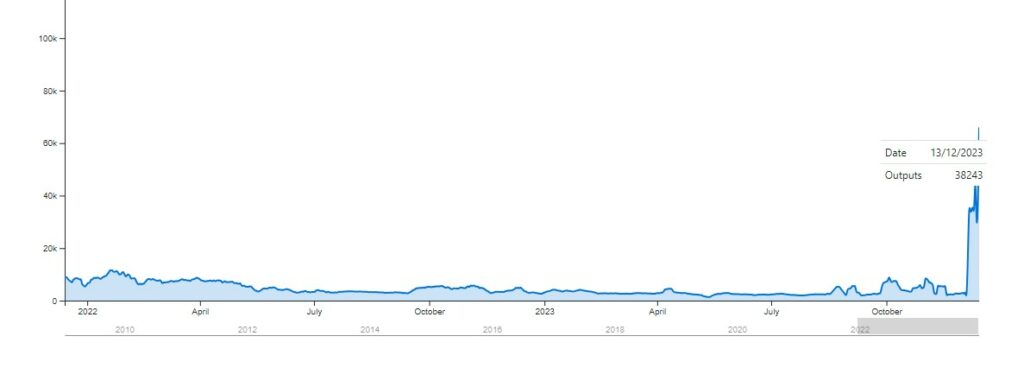Important facts:
-
Ordinal BRC-20 tokens also help increase fees.
-
Transaction fees are around 250 sats/vB, around $15 for normal transactions.
Fees for transactions with Bitcoin are skyrocketing again. Although they do not reach the records of May, when network congestion increased commission costs to $30 (or 500 sats/vB), they remain at levels that many users are suffering from.
Accordingly Data from mempool.space, The rates for a typical high priority transaction (10 minutes) are in the range of 200 sats/vB and 300 sats/vB. This averages out to about $15 for a transaction weighing less than 144v/B. In other words, if someone wanted to send 0.0024 BTC or 100 USD at this moment, they would have to pay this amount in a short time for confirmation.
The root cause of this situation is the current network congestion caused by an increasing demand for block space from BRC-20 token and stamp (NFT) traders registering in the Bitcoin archive via the Ordinals protocol.
Mempool.space has been saying this for several days The transactions waiting in the Bitcoin mempool represent more than 370 MvB. with an average of 300 waiting blocks and more than 295,000 transactions. As CriptoNoticias reports, this became the heaviest mempool in Bitcoin history, surpassing the mark reached in January 2018. It should be noted that similar records were also reached during the congestion in early 2021 and in May this year.
The main cause of the fee increase is the BRC-20 token markets, which use Bitcoin to record their issuance and merchant transactions. According to data from BRC-20.io, The market cap of these tokens is $1.6 trillion with a daily volume of $80 million. One of the triggers for these markets has to do with the 1000SATS token arriving on Binance and causing a surge in trading volume.
Due to the rise in the price of these tokens, traders are willing to pay high commissions to execute their transactions as quickly as possible. The result can be seen as negative for people who only use Bitcoin as a means of payment, because if they wanted to make a transfer equivalent to $20, they would have to pay a corresponding amount in commissions.
On the other side of the coin are the network's miners, who receive the profits from usage fees. Miners have been doing this since the launch of the Ordinals protocol, which allows all of these token and NFT operations to be recorded in the Bitcoin archive collected 3,700 BTC or $159 million in fees.
The boom in stamps and runic inscriptions
Controversy over Bitcoin's use as a database and beyond mere currency exchange is growing with the emergence of stamp and rune markets, two types of inscriptions that use a function called Op_Return to add arbitrary data to Bitcoin transactions. Although Op-Return has long been used for various types of operations (as long as the information added has a limit of 80 bytes), this has been the case for a few weeks now Its use has increased by more than 200%, from an average of 8,000 transactions of this type to over 35,000 in one day.

Between the increased use of transactions executing Op_Return and the registrations of BRC-20 tokens, the average weight of transactions in Bitcoin has increased because the information contained has this effect. For this reason There are fewer transactions waiting than in May (when they reached a daily average of over 400,000), but the whole thing is more difficult. This weight, used to calculate the fee value, contributes to the current mempool situation and the cost of transactions in Bitcoin.